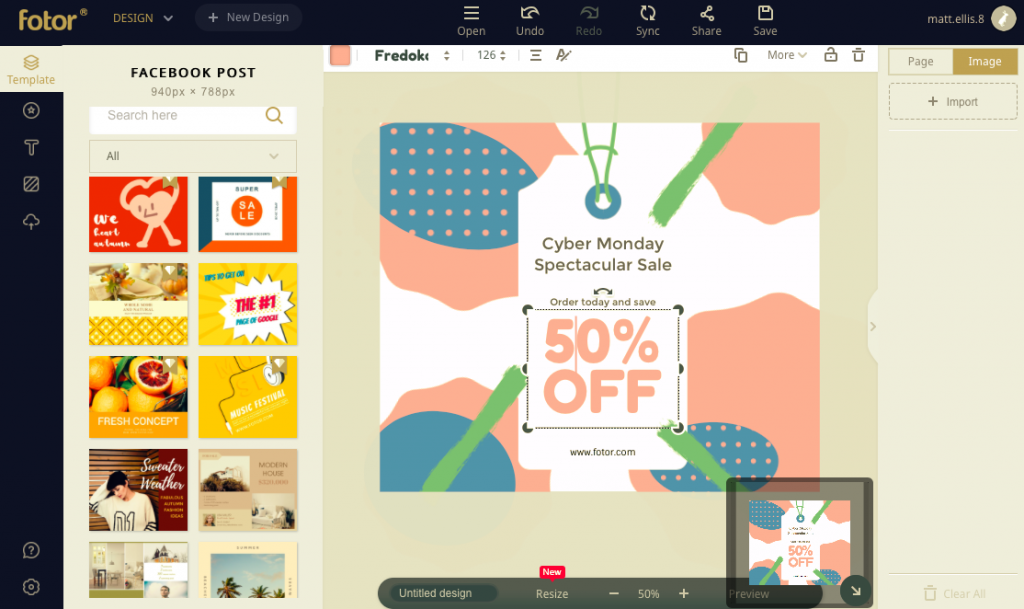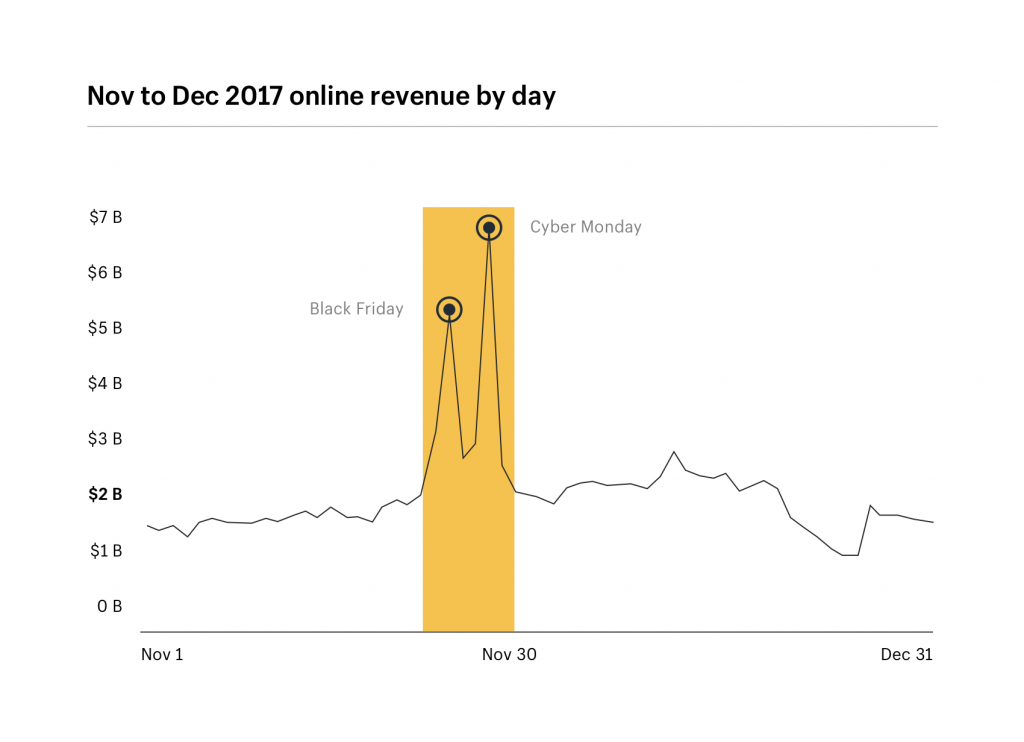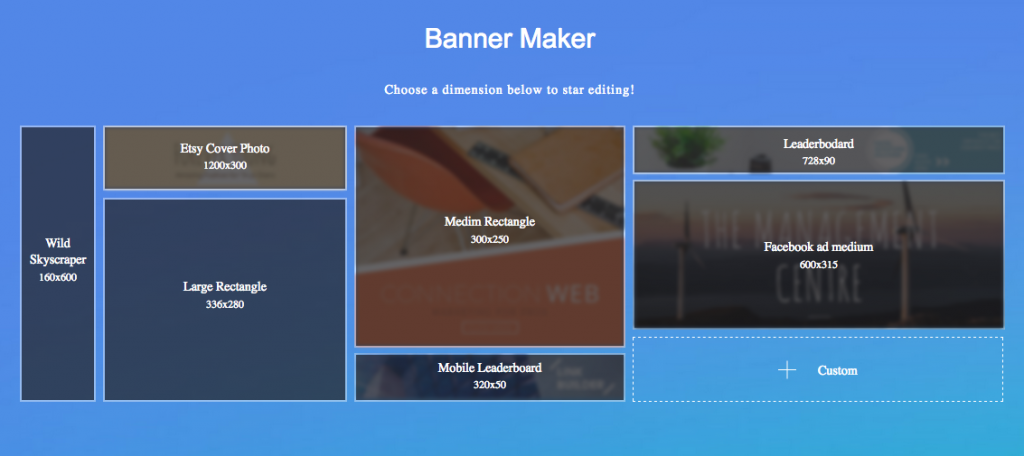8 Expert Ways to Boost Ecommerce Sales for Black Friday and Thanksgiving Weekend
Everyone loves the warmth and merriment of the holiday season, but ecommerce stores have more to be thankful for: the huge spike in sales from Black Friday, Cyber Monday, and the Thanksgiving weekend shopping!

Photo From Pexels.com
It’s common knowledge that Thanksgiving weekend is the biggest shopping period of the year, but statistics from last year’s sales illuminate just how powerful the Black Friday to Cyber Monday weekend can be:
- 174 million Americans went shopping between Thanksgiving and Cyber Monday, beating out 2016’s record of 164 million.
- 58 million shopped exclusively online while 65 million shopped both online and in-store (51 million shopped exclusively in-store).
- U.S. retailers earned a total of $7.9 billion… on Black Friday alone! That doesn’t even factor in Cyber Monday, Thanksgiving day, or the rest of the weekend.
So the question remains: how can you capitalize on the huge gains of Thanksgiving weekend? Going into November unprepared means losing out on a huge sales opportunity — the greatest sales opportunity of the year. But taking a proactive and deliberate approach and building your strategy on effective and proven methods… you can net you enough profits for a sizeable nest egg. Those extra earnings are invaluable for spearheading next year’s campaigns, not to mention funding your own personal holiday shopping.
Whether you’re new to ecommerce or just looking to learn from the masters, we wanted to share with you how the experts handle Black Friday, Cyber Monday, and the entire Thanksgiving weekend. Incorporate these eight techniques, tactics, and tips into your ecommerce strategy, and make your holidays as happy as can be.
1. Promote the Right Products
Let’s start by talking about which products sell best. Since the rise of Black Friday and Cyber Monday, shopping over the Thanksgiving weekend has become about the deal. Shoppers buy from whomever offers the juiciest deals, so you need to make sure your campaigns aren’t just attractive, but competitive as well.
Anticipating your best sellers can be a huge help for this. First, you can focus your most lucrative deals and promotions around these items, taking advantage of their built-in appeal. Second, you can devise a store-wide strategy around them, using the sales from hot-ticket items to compensate for price-cutting on more competitive items.
According to a survey of Thanksgiving weekend shoppers last year, here are the top ten product categories that customers said they spent the most money on:
- Electronics (23%)
- Clothing/footwear (21%)
- Toys (14%)
- Entertainment (10%)
- Kitchen wares (6%)
- Beauty (5%)
- Fashion accessories (4%)
- Furniture/home decor (4%)
- Gift cards (3%)
- Sporting goods/recreation (2%)
Based on this list, consider highlighting deals on these in-demand products, or even temporarily expanding your product range to include them.
2. Target the Right People
Just like you should know which products to focus on, you also want to learn which types of customers to target. Who takes advantage of sales, deals, and promotions the most, statistically speaking? Who spends the most during Thanksgiving weekend?
A study from Finder examined the shopping behavior of different customer groups during past Black Fridays and Cyber Mondays. While they revealed a lot of imperative findings, here are some highlights you can directly apply to your upcoming strategy:
- Of all people, 65.2% bought something on sale that they wouldn’t have bought if it weren’t on sale.
- Women are more likely to take advantage of a sale, with 68.2% having done so in the past, compared against 62% of men.
- Millennials seem to be the most conscientious shoppers. The generation is the most likely to buy discounted items, with 76% having done so; however, they also spend the least (on sales items). Moreover, 64.4% of millennials also plan to “hold off” on shopping until Black Friday to maximize their savings.
- Who spends the most? Gen Xers are the biggest spenders, with this study citing $604 per person. Millennials come in second with $557, and Baby Boomers fall in last with only $438. In terms of actually participating in Thanksgiving weekend shopping, regardless of the amount spent, Millennials lead with 61.9%, followed by Gen Xers with 49.5%, and again Baby Boomers fall in last with 27%.
- Somewhat counter-intuitive, households earning $50k – $75k annually spend the most during the shopping season, while those earning $150k – $300k spend the least.
If these sound like your target customers already, all you have to do is stay the course. However, if these profitable customer groups are outside your usual market, consider altering your strategy or launching new campaigns to include them.
3. Generate Buzz on Social Media
Even if you promote the right products to the right people, having the best deals won’t matter if no one knows they exist. That’s why generating buzz — especially with social media posts — is a must for any November marketing strategy.
First, you need a deal that’s worth publicizing. Once you have that, you can start advertising so people can keep you in mind when they plan out their shopping. This means targeting the right social media channels, hashtags, user groups, etc., wherever your target shoppers are.
Because all your competitors have their own mass-marketing strategies, you need to make sure your posts and ads stay competitive. While the deal speaks for itself, you can also increase your appeal with traditional advertising tactics like countdowns, a visible ticking clock that shows in real time how much longer your deals last.
You also need to make sure your posts stand out. Social media is a visual medium, so if your posts are bland or uninspired, people will scroll right past them without even reading. Instead, use attention-grabbing visuals to help people remember the deal you’re offering — visuals are scientifically proven to increase memory retention.
Even without much experience in design or social media, business owners and marketers can still optimize their visuals with a graphic design tool like ours. Fotor comes with 40 pre-made templates just for Facebook posts alone — simply plug in your individual information like the terms of the sales, and you have a professionally-designed ad in just seconds. If you want something more unique, Fotor also offers an easy-to-use online design tool to create your own original designs for any social media platform.

4. Plan for “Black November”
We talk about Black Friday and Cyber Monday like individual and isolated days, but the truth is, the “shopping fever” extends well past Thanksgiving weekend. According to Shopify, the entire month of November — along with the first two weeks of December — outperforms other months for shopping sales.

Source: Shopify
While it’s tempting to compartmentalize all of your holiday promotions to only Thanksgiving weekend, it’s best to continually offer deals from November 1st all the way through Christmas (to catch last-minute shoppers). Planning for Black Friday and Cyber Monday isn’t a single event, it’s a marathon.
Of course, you want to save your very best deals and marketing campaigns for the days between Thanksgiving and Cyber Monday. By all accounts, these days surpass all others in shopping revenue. What we recommend is a two-pronged strategy: target the Thanksgiving weekend shoppers, but don’t neglect the minority that do their holiday shopping in other weeks.
5. Tailor Your Content Strategy
As we mentioned before, blogs are a great way to improve SEO and incoming traffic. Aside from a natural place to put your main search engine keywords, blogs are also perfect for attracting the attention of your target customers by discussing topics relevant to them.
When it comes to Thanksgiving weekend, though, you way want to change up your usual content strategy. For one thing, you should promote your Black Friday and Cyber Monday deals — a quick blog post or video about what discounts you offer and when is great for publicity and spreading the word.
But you can also take it to a next level. Consider what kinds of content holiday shoppers want to read: shopping guides, gift guides, and buying guides.
For example, if you sell cameras, you could do a blog or video explaining the different technical specifications of the leading brands and what kind of photographer they’re recommended for. This will get you noticed by people searching for this information online, and once they’re ready to buy, they’re already on your site. The product they’ve decided on is just a click away!
You can also post more general shopping advice. “What to buy an indecisive teenager” or “what gifts show your friend you really care” are topics along the lines of what shoppers are thinking about already — offering the help they need ingratiates yourself with prospective customers, and brings them to your site at a time when they’re eager to make a purchase.
6. Stock Up
Not all holiday shopping advice is high-level advertising and marketing tips. Sometimes it’s just about upholding the retail fundamentals — such as also having enough inventory in stock that you don’t miss a sale.
Having your products go out of stock during the holiday shopping season can be a huge blow — not only do you lose the sale, you also lose the customer with a bad impression. Better to just avoid the distress altogether with better foresight and planning. A look at your sales from this time last year should give you a good jumping-off point, and from there factor in a little forecasting and trend research.
Keeping inventory levels up is something you need to get started on as soon as possible. Considering shipping times from manufacturers and sites registering accurate stock levels, it’s better to have at least a few weeks of buffer time in case of issues or delays.
7. Optimize for Mobile
Sources confirm that every year, mobile devices claim more and more purchases. Last year, mobile sales made an exceptionally impressive leap forward; a Salesforce study cites a 48% growth in sales made on mobile devices. It was the first time in history, mobile sales surpassed those on desktop.
What this suggests to business owners is to optimize their mobile site. Having a fully responsive mobile site is a bare minimum — you also want to make sure your site’s design meets modern standards and even goes above and beyond to impress customers.
Ecommerce brands can also use their mobile site to steal customers away from brick-and-mortar stores. Comparison shoppers love to research product prices online, even while shopping in-store. That means more traffic for your mobile store, and the opportunity to offer an even better deal to win over customers.
8. Prioritize Deal Promotions On-Site
While reaching out to new customers through social media, don’t neglect your loyal customers. In addition to external marketing, you also want to show off your deals on your own site, but not just anywhere. Reserve the best, highest-traffic areas of your site for promoting your holiday sales and discounts.
Areas like the landing screen or the banner area above the top navigation menu are the most effective screen “real estate.” That’s where you want to display ads and banners for your Thanksgiving weekend deals, to make sure all your visitors see them.
If you don’t mind slightly more aggressive advertising, you can use a modal or pop-up window on your home page. Because these require the user to click out of the box before continuing, you can be sure you get your message across.
As far as specific techniques, you can apply the same traditional advertising methods to make the most of out your promotions. For example, the real-time countdown we mentioned above is applicable here as well — many sites feature a “ticking clock” that’s always present at the top of the screen, so you never forget throughout the entire shopping experience.
Again, an effective image editor like Fotor can let you create professional-looking designs with the help of templates and easy-to-use controls. In fact, Fotor’s banner maker specializes exclusively in banners.

All you have to do is select the dimensions you need, and you’re set to begin. Because they’re small and flexible, banners are ideal for on-site ads, not to mention a flat-out necessity for backgrounds on social media account pages.
Takeaway: The Most Wonderful Time of the Year… for Ecommerce
Sure, the holiday season brings a lot of extra work for ecommerce brands — those extra sales aren’t free, you have to earn them. But instead of scrambling around November trying to keep your head above water, if you go into the season with a solid plan (incorporating the tactics above, hopefully), then you’ll find you have more control over your results and direct influence over your success. And that’s something anyone would be thankful for!
